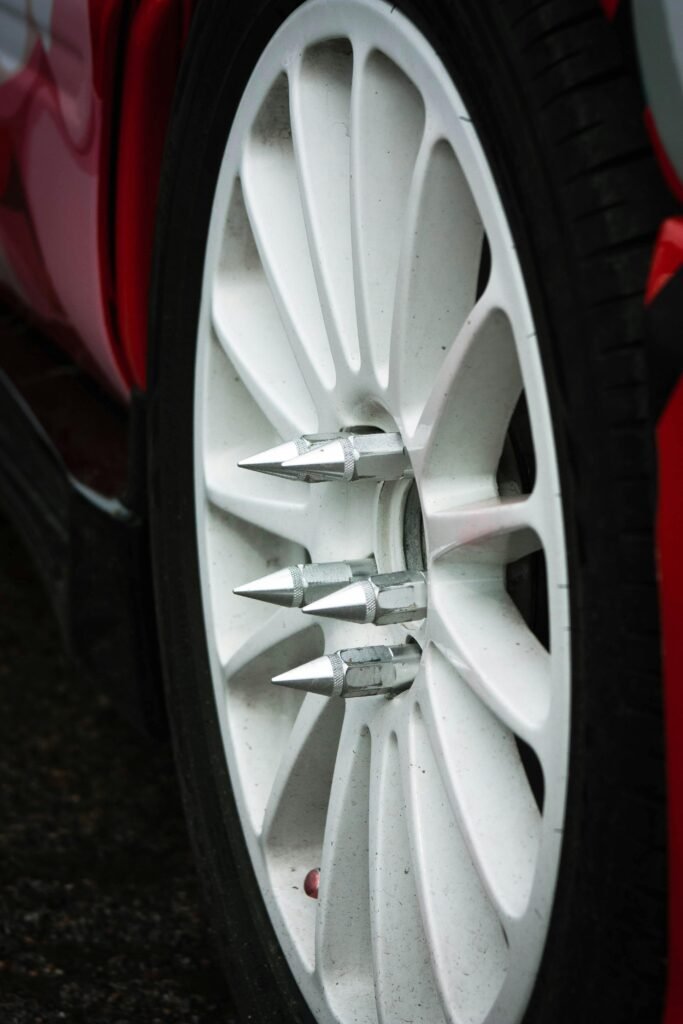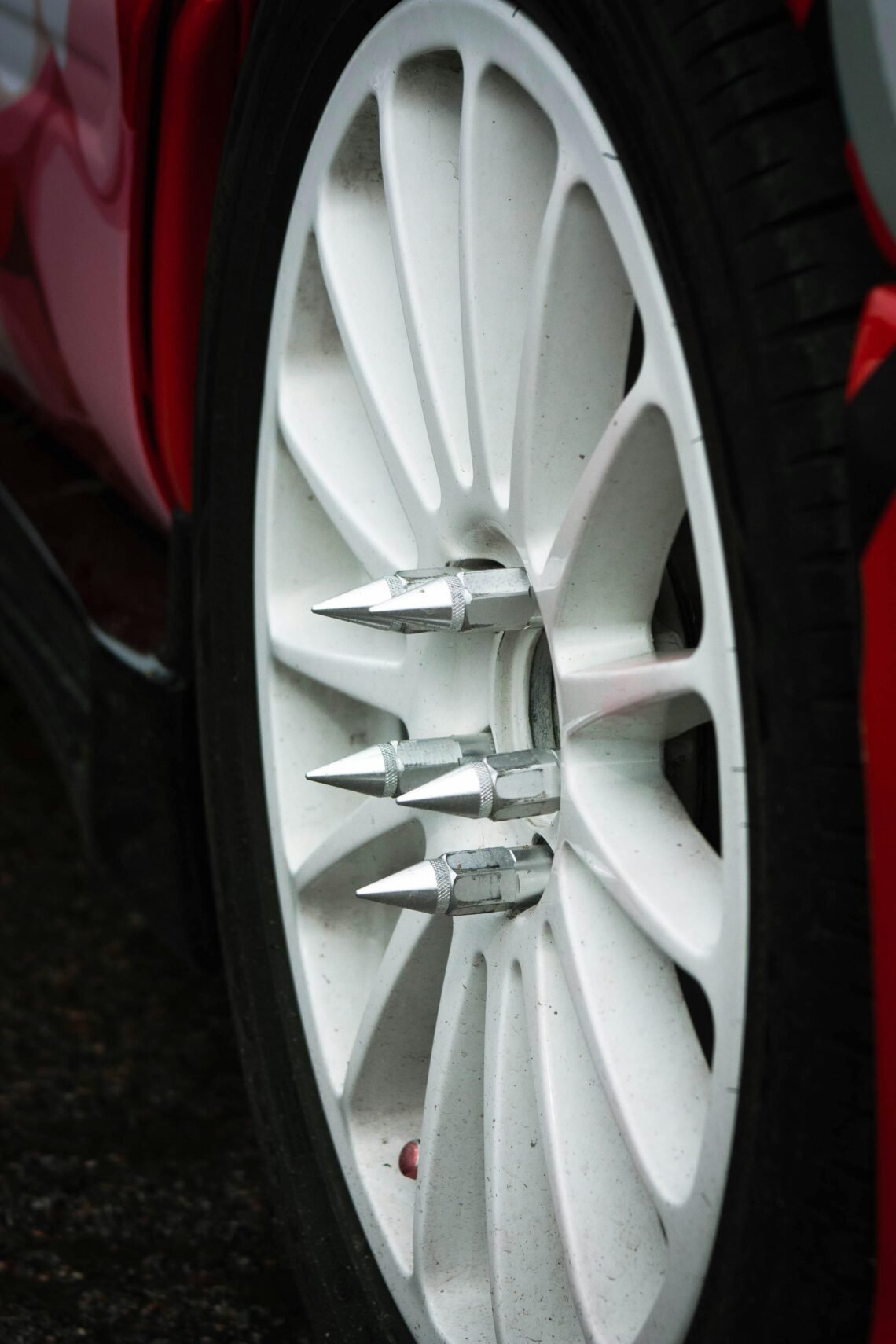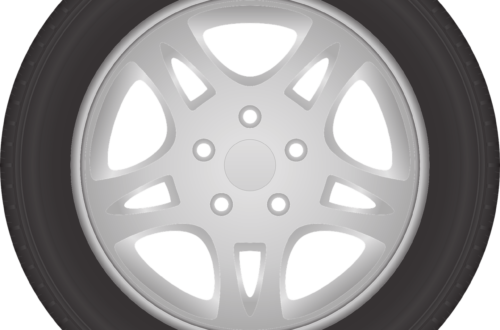If you’ve ever wondered whether you’re inflating your tires correctly, wonder no more. In this article, you will discover the key techniques to mastering proper tire inflation. We will explore the importance of maintaining the right tire pressure and how it affects your driving experience. From understanding the recommended tire pressure to using a tire pressure gauge effectively, you will gain the knowledge needed to ensure your tires are always inflated to perfection. Get ready to hit the road with confidence as we unlock the secrets to achieving optimal tire performance.

This image is property of images.pexels.com.
Importance of Proper Tire Inflation
Increased Safety
Proper tire inflation is crucial for ensuring your safety on the road. When your tires are properly inflated, they have optimal contact with the road surface, allowing for better traction and control. Underinflated tires can lead to decreased handling and braking performance, increasing the risk of accidents. On the other hand, overinflated tires may cause reduced stability and handling, making it harder to maintain control of your vehicle. By keeping your tires properly inflated, you can enhance your safety and that of your passengers.
Improved Fuel Efficiency
Another significant benefit of ensuring proper tire inflation is improved fuel efficiency. When your tires are inflated to the correct pressure, there is less rolling resistance, which means your engine doesn’t have to work as hard to move your vehicle. This, in turn, leads to better gas mileage and lower fuel consumption. On the other hand, underinflated tires create more rolling resistance, causing your engine to work harder and consume more fuel. By maintaining proper tire pressure, you can save money on fuel and reduce your carbon footprint.
Extended Tire Lifespan
Proper tire inflation also plays a vital role in extending the lifespan of your tires. When your tires are underinflated, the sidewalls of the tires flex more, resulting in increased heat buildup. This heat can lead to accelerated tire wear and even tire failure. Overinflated tires, on the other hand, create excessive wear in the center of the tread. By keeping your tires properly inflated, you can distribute the weight evenly across the tire, minimizing wear and extending its lifespan. This not only saves you money on new tires but also reduces the environmental impact of tire disposal.
Factors Affecting Tire Pressure
Temperature
Temperature is a significant factor that affects tire pressure. As the temperature changes, the air inside your tires expands or contracts. In cooler temperatures, tire pressure decreases, requiring inflation to maintain the correct pressure. In contrast, in warmer temperatures, the air expands and increases tire pressure. It’s essential to regularly check your tire pressure, especially during extreme temperature fluctuations, to ensure that it remains within the recommended range.
Load Capacity
The amount of weight your vehicle is carrying, or its load capacity, also affects tire pressure. Each tire has a maximum load capacity rating, and if you exceed this rating, it can lead to excessive tire wear and a higher risk of tire failure. It’s crucial to understand your vehicle’s load requirements and adjust the tire pressure accordingly. Overinflating the tires when carrying a heavy load can help distribute the weight more evenly and prevent excessive wear.
Driving Conditions
The driving conditions you encounter also impact tire pressure. Driving on rough roads, unpaved surfaces, or encountering potholes can cause air leakage and result in reduced tire pressure. It’s important to periodically check your tire pressure, particularly after driving in challenging conditions, to ensure it remains at the proper level. By regularly monitoring your tire pressure, you can address any issues promptly and maintain optimal performance.
Choosing the Correct Tire Pressure
Refer to the Vehicle Manufacturer’s Recommendations
The first step in choosing the correct tire pressure is to refer to your vehicle manufacturer’s recommendations. This information can usually be found in your vehicle’s owner’s manual or on a sticker located on the driver’s side door jamb or inside the fuel door. The manufacturer’s recommendations are based on extensive testing and provide the tire pressure range that ensures optimal performance and safety for your specific vehicle.
Consider Load Requirements
If you frequently carry heavy loads or have more passengers in your vehicle than usual, you may need to adjust the tire pressure accordingly. Consult your vehicle’s load capacity rating to determine the appropriate tire pressure when carrying a heavy load. It’s important to strike a balance between the load requirements and maintaining the manufacturer’s recommended tire pressure range.
Adjusting for Specific Driving Conditions
In certain driving conditions, such as off-roading or driving in extreme weather, you may need to adjust your tire pressure to ensure optimal performance. Lowering the tire pressure can improve traction on soft surfaces, such as sand or mud, while increasing tire pressure can provide better stability on icy or snowy roads. However, it’s essential to remember to reinflate the tires to the proper pressure once you return to normal driving conditions.
Tools for Measuring Tire Pressure
Tire Pressure Gauge
A tire pressure gauge is an essential tool for measuring tire pressure accurately. It consists of a small, handheld device with a calibrated scale and a reading dial or digital display. To use a tire pressure gauge, you simply remove the valve cap from the tire, press the gauge firmly onto the valve stem, and read the pressure reading displayed. Tire pressure gauges are available in various types and price ranges, but it’s important to choose one that is accurate and easy to use.
Digital Pressure Gauge
Digital pressure gauges are an alternative to traditional dial gauges and provide a digital reading of tire pressure. They typically offer a more precise reading and are easier to read, especially for those with visual impairments. Digital pressure gauges often have additional features, such as backlighting for better visibility in low light conditions or the ability to store previous readings for reference.
Automatic Tire Inflator
An automatic tire inflator is a convenient tool that not only measures tire pressure but also inflates the tires to the desired pressure automatically. These devices often feature a built-in pressure gauge or connect to an external gauge for accurate readings. Automatic tire inflators are particularly useful for those who want a hassle-free way of maintaining proper tire pressure without the need for manual inflation.

This image is property of images.pexels.com.
Steps for Checking Tire Pressure
Park the Vehicle on Level Ground
Before checking your tire pressure, park your vehicle on a level surface to ensure accurate readings. Uneven surfaces can affect the weight distribution and, consequently, the tire pressure readings. It’s best to conduct the tire pressure check when the tires are cold, as driving can increase tire temperature and lead to higher pressure readings.
Locate the Recommended Tire Pressure
Refer to your vehicle manufacturer’s recommendations or the tire information placard located on your vehicle to find the recommended tire pressure. The placard usually provides information for both the front and rear tires and may vary depending on the vehicle’s load requirements. Always use the recommended pressure as a guide for accurate inflation.
Remove the Valve Cap and Press the Gauge Firmly onto the Valve Stem
Remove the valve cap from the tire’s valve stem and place it in a safe location to prevent loss or damage. Press the tire pressure gauge firmly onto the valve stem until you hear a slight hiss of air escaping. This indicates that the gauge has made a proper seal with the valve stem and will provide an accurate reading.
Read the Pressure Reading and Compare it with the Recommended Pressure
Once the gauge is securely attached, wait for a few seconds until the pressure reading stabilizes. Read the pressure measurement on the gauge’s display or dial and compare it to the recommended tire pressure. If the reading falls within the recommended range, your tire pressure is adequate. However, if it falls below or exceeds the recommended range, you will need to adjust the tire pressure accordingly.
Add or Release Air as Necessary
To increase tire pressure, attach an air hose or compressor to the valve stem and add air until the desired pressure is reached. If you need to release air, gently press the valve core inside the valve stem using a small tool or the tip of the pressure gauge. Regularly check the pressure during the process to ensure you don’t overinflate or underinflate the tire.
Common Mistakes to Avoid
Relying on Visual Inspection Alone
One common mistake many drivers make is relying solely on visual inspection to determine if their tires are properly inflated. While visual cues such as sagging tires or bulging sidewalls can indicate a problem, they are not reliable indicators of proper tire pressure. It’s crucial to use a tire pressure gauge to obtain accurate readings and adjust the pressure accordingly.
Neglecting to Check Tire Pressure Regularly
Neglecting to check your tire pressure regularly is another mistake that can lead to safety risks and decreased performance. Tire pressure can change over time due to factors such as temperature fluctuations or slow air leaks. It’s important to develop a routine of checking your tire pressure monthly or before long trips to ensure it remains within the recommended range.
Inaccurate Tire Pressure Gauge
Using an inaccurate tire pressure gauge can lead to incorrect readings and improper inflation. Over time, gauges can become less accurate, so it’s important to periodically calibrate or replace your gauge to ensure its reliability. Always choose a high-quality gauge from a reputable brand and follow the manufacturer’s instructions for maintenance and calibration.

This image is property of images.pexels.com.
Importance of Regular Tire Pressure Maintenance
Ensuring Optimal Performance
Regular tire pressure maintenance is crucial for ensuring optimal performance of your vehicle. Properly inflated tires provide better handling, stability, and braking performance, allowing you to maintain control on the road. In contrast, improperly inflated tires can compromise your vehicle’s performance, leading to reduced handling, longer braking distances, and increased risk of accidents. By regularly checking and maintaining proper tire pressure, you can experience the full potential of your vehicle’s performance.
Minimizing Tire Wear
Proper tire pressure also plays a significant role in minimizing tire wear. When your tires are properly inflated, the weight is evenly distributed across the tire, reducing the risk of uneven tread wear. Underinflated tires, on the other hand, cause increased wear on the shoulders of the tire, while overinflated tires result in excessive wear in the center of the tread. By maintaining the correct tire pressure, you can extend the lifespan of your tires and save money on premature replacements.
Preventing Blowouts and Tire Failure
One of the most critical reasons for regular tire pressure maintenance is to prevent blowouts and tire failure. Underinflated tires are more prone to overheating, which can lead to a blowout, especially at higher speeds. Overinflated tires, on the other hand, are at a higher risk of sudden tire failure due to the increased stress on the tire structure. By keeping your tires properly inflated, you can minimize the risk of tire blowouts, thereby enhancing your safety on the road.
Tips for Maintaining Proper Tire Inflation
Check Tire Pressure Monthly
To ensure consistent and optimal tire pressure, it’s recommended to check your tire pressure at least once a month. This regular inspection allows you to catch any changes or issues before they become more significant problems. By incorporating tire pressure checks into your monthly routine, you can maintain the safety and performance of your vehicle.
Monitor Tire Pressure in Extreme Weather Conditions
Extreme weather conditions, such as scorching summer heat or freezing winter temperatures, can affect tire pressure. It’s important to monitor your tire pressure more frequently during these periods to ensure that it remains within the recommended range. Extreme heat can cause tire pressure to increase, while extreme cold can lead to decreased pressure. Regular monitoring allows you to respond to these fluctuations and adjust the pressure as needed.
Pay Attention to Load Requirements
If you frequently carry heavy loads or travel with more passengers than usual, it’s important to pay attention to your vehicle’s load requirements. Refer to the load capacity rating and adjust your tire pressure accordingly to ensure optimal performance and safety. This will help prevent excessive tire wear and potential damage to your tires.
Replace Damaged or Defective Tires
Regular tire inspections can help you identify any damage or defects that may compromise tire performance and safety. If you notice any cuts, bulges, or other signs of damage, it’s crucial to replace the tire promptly. Driving on damaged or defective tires can lead to tire failure and increase the risk of accidents. By replacing damaged tires, you maintain the integrity of your entire set, ensuring proper inflation and overall safety.
Importance of Proper Tire Inflation for Different Vehicles
Cars and Sedans
Proper tire inflation plays a vital role in ensuring the safety and performance of cars and sedans. For these vehicles, maintaining the recommended tire pressure helps achieve optimal traction, handling, and fuel efficiency. By keeping your tires properly inflated, you can enjoy a comfortable and smooth ride while reducing the risk of accidents due to compromised control on the road.
SUVs and Trucks
SUVs and trucks often have different load capacity requirements compared to cars and sedans. It’s crucial to follow the manufacturer’s recommendations for tire pressure specific to your vehicle. Properly inflated tires in SUVs and trucks provide better stability when carrying heavy loads and towing. Ensure that the tire pressure aligns with the load requirements to maximize safety and performance.
Motorcycles
Proper tire inflation is equally important for motorcycles. For optimal performance and safety, motorcycle tires must be inflated to the recommended pressure. Underinflated or overinflated motorcycle tires can compromise handling, stability, and braking performance, increasing the risk of accidents. Regularly check and maintain proper tire pressure to ensure a smooth and safe ride on your motorcycle.
Conclusion
In conclusion, proper tire inflation is vital for your safety, fuel efficiency, and tire longevity. By understanding the factors that affect tire pressure, choosing the correct tire pressure, using the right tools for measurement, and following the steps to check and adjust tire pressure, you can ensure optimal performance and minimize the risk of tire failure. Regular tire pressure maintenance, along with avoiding common mistakes and following maintenance tips, will help you enjoy a safe, smooth, and economical driving experience. Remember, taking care of your tires is not just about maintenance but also about prioritizing your well-being on the road.





